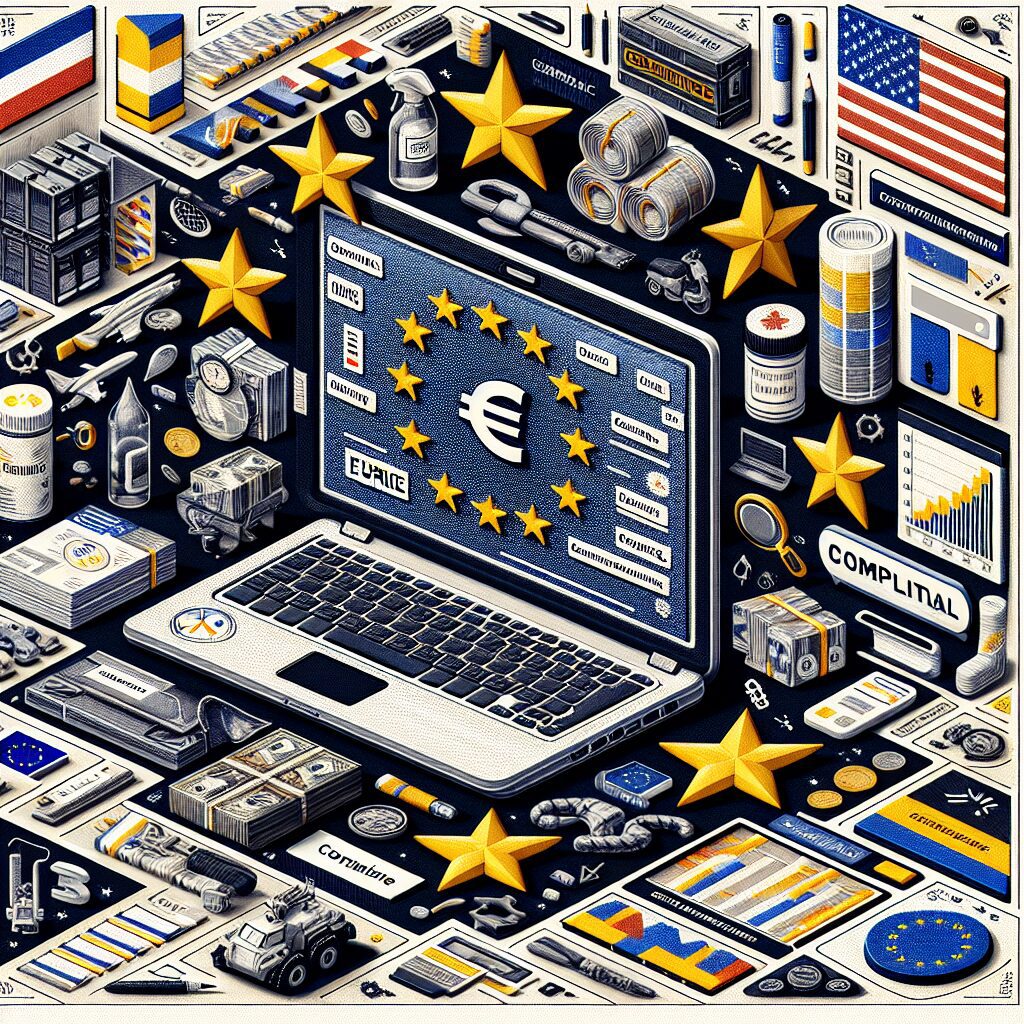About eldris
At Eldris, we automate SEO, multilingual site expansion, and EU compliance for brands scaling across Europe. Our AI-powered platform handles everything from content publishing to regulatory docs—so you don’t have to.
In This Article
- Ensure full VAT and EPR compliance before scaling Amazon Europe operations.
- Use multilingual SEO and proper localisation—not just translation—for listings.
- Choose the right fulfilment model—EFN, MCI, or Pan-EU—for your product and budget.
- Stay updated on packaging laws, especially in France, Germany, and Italy.
- Automate operational tasks using top-tier seller platforms and compliance software.
- Avoid haste: test listings in one or two markets before broad EU rollout.
- Provide localised customer service in each language you sell in.
- Understanding Amazon EU seller fees delivers up-to-date guidance on EU marketplace compliance.
Understanding the European Amazon Marketplace
Accessing Over 400 Million Shoppers
When businesses look to scale Amazon Europe, they tap into an extraordinarily vast consumer base. With access to more than 400 million potential customers across 27 EU nations, Europe’s Amazon marketplaces offer a significant amplification of brand reach. Amazon operates dedicated platforms in the UK, Germany, France, Italy, Spain, the Netherlands, Sweden, and Poland — each presenting unique buying behaviours, seasonal peaks, and regulatory considerations. By understanding regional nuances, sellers can position their listings to align with local preferences, ensuring improved conversion rates.
Unlike single-market selling, scaling across Europe requires strategic segmentation and comprehensive platform management. Amazon’s European Marketplaces Account (EMA) enables sellers to manage all EU marketplaces through a unified dashboard. This streamlines operations but doesn’t eliminate the need for local compliance, category-specific rules, and tested fulfilment strategies.

Cost Breakdown for Scaling Amazon Listings
Amazon Seller Plans, Fees, and Logistics
The first financial decision when preparing to scale Amazon Europe lies in choosing the correct seller plan. Amazon offers an Individual Selling Plan and a Professional Selling Plan. While the Individual Plan incurs per-item fees, the Professional Plan, priced around €39/month, comes with significant account management features. Most sellers expanding across the EU opt for the Professional Plan, given the economies of scale it affords.
Referral fees—typically 7–15% of the sale price—apply to all items. Additionally, sellers using Fulfilment by Amazon (FBA) incur fees based on product size, weight, and destination country. These can vary significantly depending on whether you fulfil from one centralised country or spread inventory across several European Fulfilment Network (EFN) warehouses.
Storage fees are another key cost centre. Expect monthly charges ranging from €26 to €36 per cubic metre, with peak season surcharges running from October through December. Coordinating cost-effective inventory management becomes essential here to avoid unnecessary fees during Q4 spikes.
“Scaling Amazon operations in Europe isn’t just about listing translation; it’s a multifaceted process involving commerce, compliance, and customer experience.”
VAT Registration and Tax Obligations
Any business aiming to scale Amazon Europe must confront VAT (Value Added Tax) requirements. Each EU country has independent VAT regulations, thresholds, and registration demands. If you store inventory in a European country—whether through Amazon warehousing or third-party logistics—you are legally obligated to register for VAT in that country.
The OSS (One Stop Shop) scheme introduced by the EU aims to simplify VAT filings. However, it only applies to cross-border B2C sales, not warehousing. Therefore, sellers using Amazon’s Pan-European FBA programme must register for VAT in every country where their products are stored. Failure to do so can result in hefty penalties and suspended listings.
VAT rates vary widely by country and product type—books may be taxed at 5% in one nation, but 20% in another. Partnering with an EU-based tax professional is strongly advised. Amazon also offers resources and partnerships with VAT compliance firms such as Avalara or Taxually to assist sellers.
Understanding Extended Producer Responsibilities (EPR)
Extended Producer Responsibility (EPR) is one of the most frequently misunderstood regulations when businesses attempt to scale Amazon Europe. The policy states that the “producer”—you—bears responsibility for the entire lifecycle of the product, including recycling and disposal. EPR is law in France and Germany, with more countries introducing similar legislation.
In France, for example, sellers face mandatory EPR registration for products like electronics, batteries, and packaging materials. You’ll need to obtain a unique identification number (UIN) from relevant eco-organisations. Proof of registration must be provided to Amazon, and fees assessed vary based on product category, volume, and material impact on the environment.
Germany’s VerpackG (Packaging Act) enforces similar rules, requiring producers to register with the LUCID database and contribute to a recycling system. Sellers found non-compliant may be blocked from listing affected products or penalised by regulatory bodies.
Multilingual SEO and Product Localisation
scale Amazon Europe Through Enhanced Localisation
To truly scale Amazon Europe successfully, product listings must do more than merely exist—they need to convert. Each country’s buyers search using unique keywords, influenced by cultural idioms and local product preferences. Direct translation is insufficient. Instead, a multilingual SEO strategy ensures that listings are properly indexed in each marketplace and resonate with local audiences. This is where professional localisation becomes pivotal.
Avoid depending solely on automated tools like Amazon’s ‘Build International Listings’. These services are useful for administrative duplication, but they lack semantic accuracy. Investing in native-speaking SEO translators provides tremendous returns. Key elements such as title phrasing, bullet point positioning, and A+ Content demand thorough localisation to meet each country’s marketing expectations.
Incorporate customer reviews and Q&A sections as part of your SEO strategy—these two areas are often drawn into Amazon’s A9 ranking algorithm in native languages. Additionally, subtle differences exist in buyer expectations: Germans may seek technical specs, whereas Spanish users might favour customer testimonials. Tailoring to these expectations significantly boosts your listings’ performance.
Cross-Border Inventory & Fulfilment Options
Amazon provides several cross-border fulfilment pathways, each with trade-offs. EFN (European Fulfilment Network) allows UK or EU sellers to store inventory in one country and fulfil others via Amazon logistics. It’s a simpler route for newcomers, though slower delivery times and higher shipping fees can impact competitiveness. Regulatory friction between the UK and EU post-Brexit also makes EFN less efficient than before.
The Pan-European FBA model offers a more scalable approach. Inventory is dynamically distributed to multiple EU warehouses, cutting delivery times and costs. However, this requires seven-country VAT registration and robust supply chain planning. Sellers looking for total control might also consider Multi-Country Inventory (MCI), allowing them to pick specific countries for local warehousing without full Pan-EU registration. Ultimately, your fulfilment model should align with your profit margins, product category, and customer expectations.
Consider leveraging Amazon’s newly expanded Amazon Warehousing & Distribution (AWD) system to offload upstream inventory, letting Amazon handle internal restocking logistics seamlessly.
Automation Tools to Simplify Expansion
Manual expansion across the EU is a daunting endeavour—multiple dashboards, inventory pools, and regulatory filings can quickly overwhelm lean teams. Fortunately, numerous automation tools exist to facilitate scaling Amazon Europe without burning internal resources. Leading Amazon seller platforms like Helium 10, Sellics, and Jungle Scout offer Europe-wide data insights, electrical compliance checking features, and listing copy tools.
For automation of VAT filings and EPR document maintenance, platforms such as Avalara and Taxdoo are extremely beneficial. Translation management tools like Transifex or Lokalise enable collaborative work with linguists and automation of string updates across marketplaces. Lastly, repricing tools—integral in hyper-competitive sectors—ensure your listings remain optimised without micromanagement.
Learn more about International e-commerce expansion provides further examples of AI-based solutions streamlining European Amazon operations.
Checklist for Country-Specific Packaging Rules
Don’t Overlook This Regulatory Frontier When You Scale Amazon Europe
Packaging rules across Europe are not uniform. Non-compliance not only affects listings but could result in customs delays or product stoppages. When packaging for scale Amazon Europe projects, account for labelling, recycled content requirements, and product language guidelines.
France, for instance, requires the Triman logo and sorting instructions on recyclable items. Germany mandates labelling compliance for food products, while Italy often requires full Italian-language packaging including safety information. Poland might demand CE marking visibility, especially for toys and electronics.
It’s advisable to work with a packaging compliance consultant to assess each product-SKU for risks. Keep in mind that Amazon may block shipments that don’t meet country-specific labelling laws. Read a related article offers a packaging compliance audit tool specifically for Amazon sellers operating across multiple EU regions.
Top 5 Mistakes to Avoid When Scaling in EU
While the potential is immense, companies seeking to scale Amazon Europe can falter without adequate preparation. Here are five of the most critical pitfalls to sidestep:
- Neglecting VAT and EPR Compliance: Penalties for unregistered inventory can halt your sales within days.
- Poor Translation Strategies: Auto-translation dilutes brand voice and hurts conversion rates.
- Ignoring Fulfilment Complexities: Choosing the wrong model increases overhead and delays delivery.
- Overlooking Customer Service Localisation: Buyers expect localised, timely responses in their native language.
- Failing to Test Listings Before Full Rollout: Entering all markets at once with unvalidated content risks total underperformance.
Avoiding these common missteps ensures smoother execution and improved ROI from the outset.
Conclusion: Launch Smart & Sustain Growth
[CONCLUSION_CONTENT]
Great guide on scale-amazon-europe-costs-requirements-interactive – Community Feedback
What are the main costs of scaling Amazon listings in Europe?
Key costs include Amazon’s Professional plan fee (€39/month), referral fees (typically 7–15%), FBA or FBM fulfilment charges, and compliance costs such as VAT and EPR.
Which requirements must Amazon sellers meet for EU listings?
Sellers must comply with country-specific VAT, Extended Producer Responsibility (EPR), product labelling, and packaging rules to list in European Amazon marketplaces.
How can I optimise Amazon listings in multiple European languages?
Use AI-powered multilingual SEO, professional translations, and cultural adaptation for product titles and descriptions to boost reach and conversions across Amazon Europe.








